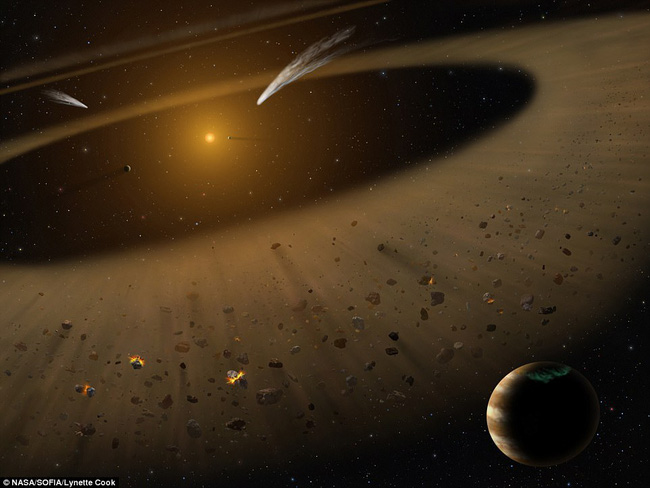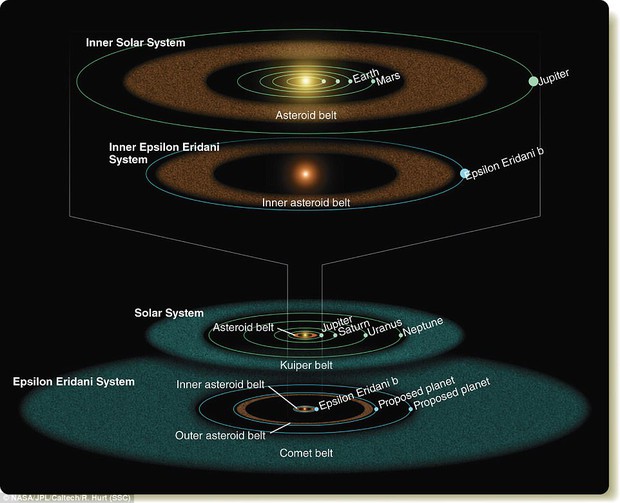This new solar system is only 1/4 distance from Trappist-1 – the star system – the planet has been dubbed “Solar System 2.0”.
At the end of February 2017, NASA announced that the planet Trappist-1 – the star system – was identical to ours. The Trappist-1 system has been dubbed “Solar System 2.0”, and was even considered the greatest hope for life, when it contains up to 3 out of 7 planets in the “can nurture life” region.
Trappist-1 – Solar System 2.0 is closest to us
The point is, Trappist-1 is quite far from us – up to 40 light years away. And recently, NASA continues to announce another star-planet system, considered “amazing” as the solar system. More importantly, it is “only” 10.5 light years from Earth, just over a quarter of the distance from Trappist-1.
This “new solar system” is located in the southern hemisphere of the constellation Eridanus, with a star named Epsilon Eridani (eps Eri for short). The Eri system is the star system – the closest planet to the solar system today.
Specifically, NASA said the Stratosphere Infrared Observatory (SOFIA) was where Eri was discovered. Previously, it was only known that eps Eri was surrounded by a “disc of debris” – fragments of matter made up of dust, gas and rocks left behind after a planet formed.
The debris disks can be very large, forming a Kuiper belt-shaped ring that surrounds the solar system.
Kuiper Belt of the Solar System and in the Epsilon Eridani System (blue below)
However, NASA says the Eri system is not the right place to look for life. It’s like our solar system “at the beginning”, at an earlier time.
According to Massimo Marengo, astronomer at Iowa State University (USA), this is an important discovery, when Eri was able to show us how the solar system was formed and how the eight planets in the system emit. How to grow
“This star-planet system is currently undergoing fluctuations that have happened to the solar system before, at a time when the Moon was not yet formed, the Earth was forming oceans, and when life on our planet begins to come into play.” – said Marengo.
Using highly detailed computational models, the experts were able to separate the strange rays of light coming from the debris disk around Eri.
“We are convinced that there are gaps in the middle of Eri’s material belt. These gaps appear to be made up of planets.”
“We haven’t figured out what planets are yet, but it would be a big shock if there weren’t any planets. Finding them will be the task of more modern equipment, like Glass. Space astronomer James NASA Webb in 2018 for example “.
“With SOFIA, we seem to have a time machine through which we reveal what happened to Earth in ancient times.”




